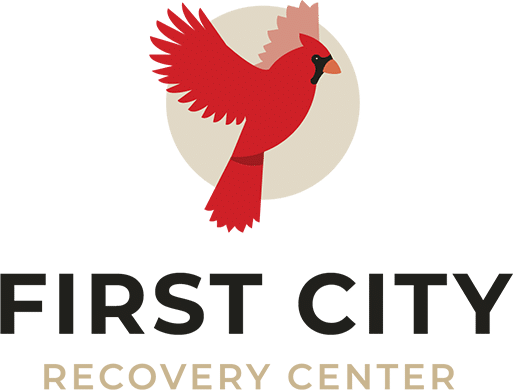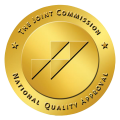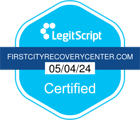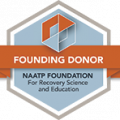Addiction & Mental Health Resources for Senior Citizens
The number of senior citizens aged 65 and above across the U.S. was around 43.1 million as per the 2012 census. It is estimated that by 2050 the number could grow significantly to reach at least 80 million. While the number of individuals in this age bracket is partly attributable to improved healthcare systems, it should not escape our attention that drug addiction and substance abuse problems negate health gains among people in this age group.
The National Institute on Alcohol Abuse and Alcoholism (NIAAA) posits that up to 17% of older adults (aged 60 and above) are affected by alcohol use and prescription drug use disorders. However, the problem is overlooked by medical practitioners due to inadequate knowledge, limited research findings, and hurried office visits. The institute opines that even in the face of these stats, there is a spark of light at the end of the tunnel. Some specialized programs and treatments are tailored to give older people a chance to revert to normal lives in case they suffer from substance use disorder.
First Recovery Center is such a facility that helps individuals, including older adults, navigate substance use challenges through various professional approaches. You can choose outpatient addiction treatment, partial hospitalization treatment, or intensive outpatient treatment. In addition, there are specialized behavioral therapies ideal for elderly people to revert to their normal healthy lives.
Table of Contents
ToggleWhat Is Substance Use Disorder for the Elderly?
Substance use disorder refers to instances in which an individual uses an illicit or legal substance or drug in a way that harms his or her health. While there is a distinction between substance abuse and addiction, it is imperative to note that some substances or drugs, even when used for medicated purposes, have a habit-forming effect that can potentially graduate to an addiction. For instance, medicated opioids used as pain killers can easily lead to addiction due to their mind-relaxing effects.
The term “elderly” denotes individuals aged 65 years and above. Among the elderly, according to the American Addiction Centers data, over 3 million senior citizens have alcohol use problems, and the number could rise to 6 million through the 2020s. Although this figure highlights a prevalence of substance use among the elderly, it does not mean that this age group does not use other licit or illicit substances in a harmful way.
Causes of Substance Abuse Among the Elderly
Although aged people are sometimes referred to as our country’s moral compass, sometimes the state of the things can be the exact opposite of our social expectations. As pointed out by NIAAA, a sizeable number of elderly people engage in the undesired use of substances. Experts argue that causes of such use disorders could either be health-based or lifestyle-based scenarios at advanced ages that can have a social toll on the individual. According to the U.S. National Library of Medicine National Institute of Health risk factors associated with substance use among seniors can be physical risks, psychiatric risks, or social risks.
Physical risks include:
• Excessive use of alcohol among males and prescribed drugs among females
• Perceptions of Caucasian ethnicity
• Long-lasting discomfort or pain
• Instances of physical disability or less mobility
• Physical relocations or transfers from one nursing home to another
• A decline in health conditions
• Polymorbidity or long-lasting physical illnesses
• Polypharmacy or huge drug burden
Psychiatric risk factors include:
• Individuals with a history of alcohol use problems
• Previous or concurrent prevalence of another substance use disorder
• Previous or current psychiatric health complications
Social risk factors include:
• Abrupt, unexpected, or forced retirement
• Financial constraints or loss of a regular source of income
• Relationship frictions in a family
• Death of a close family member, friend, or spouse
Substances Abused by the Elderly
Among the general U.S. populace, drugs like meth, heroin, cocaine, alcohol, and marijuana are common. As people advance in age, research has found that the main substances that these individuals are likely to use habitually are alcohol, tobacco, and prescribed drugs. As noted medical and mental conditions are highly exacerbated by increases in age, thus creating an increase in prescribed medications. Around 11% of the elderly are likely to use in harmful ways the drugs that they are prescribed, including psychoactive drugs like opioids, sedatives, and tranquilizers.
Alcohol use among the Baby Boomer population who constitutes the elderly in the U.S. has a historical background. They grew up between the 1960s and 1970s, a period remembered for changing attitudes towards drug and alcohol use. Alcohol is the most commonly used substance among older adults. Within health care facilities, instances of Alcohol Use Disorder (AUD) stand at 22% of the age group.
Tobacco use is another commonly used substance by older adults. The U.S. National Library of Medicine’s National Institute of Health indicates that 14% of the interviewed older adults had used tobacco in 12 months preceding the survey. Clinical trials with a bias to smoking cessation highlight that elderly smokers tend to be heavy and long-term smokers who derive physiological elements from smoking. Despite this news about adult smokers, there is always a possibility that some of them will turn away from smoking either through behavior conditioning or medicated solutions.
Other illicit substances are also common among the elderly in the U.S. Compared to the rest of the world, seniors in the U.S. are more likely to have substance use disorders. The 2012 National Survey on Drug Use and Health revealed that in the month preceding the survey, 19.3% of older adults indicated that they had used illicit substances in their lifetimes.
While these numbers could be disturbing, there are numerous corrective and preventive measures. Through structured programs offered at First Recovery Center, seniors have access to resourceful facilities established to ensure that they live a comfortable and healthy life. Reliable for addiction treatment, medical detox, or trauma and post-traumatic growth, such centers have tailor-made services for each patient.
Discerning Substance Use Disorder Among the Elderly
As people advance in age, many changes may occur to either their social or physical lives. It is a little difficult to identify substance use disorders or addictions among seniors as opposed to younger individuals. Their behaviors could be misinterpreted for lesser bodily activities or much slower thinking and responsive tendencies associated with seniors.
Despite this difficulty, these are common symptoms that can point to a substance use disorder:
• Sudden changes in sleeping patterns
• Increased instances of memory loss or lapses
• Feelings of detachment as one wants to be alone for longer times
• Sadness and irritability
• Unexplained bodily bruises
• Failing to keep clean and personal grooming
• Sudden or gradual lack of interest in the activities one used to enjoy previously
• Continued overuse of prescribed drugs even when not under medication.
Interventions for the Elderly Facing Substance Use Disorder
The U.S. National Library of Medicine identifies a continuum of interventions that are available for older adults. Its findings contradict the popular notion that older substance or drug users are likely to be stuck in permanent patterns. Some older users have even demonstrated better responsive results compared to younger ones.
A range of interventions available include:
1. Brief Interventions
This takes place in basic care environments with a focus on alcohol use and on overuse of prescribed medications. Sessions take a shorter period, lasting 15 minutes to one hour. The main aim is to educate attendees about the harms of substance use, to inspire behavioral changes, and to help users find specialized treatments.
Mostly, brief interventions employ the use of motivational interviewing and motivational enhancement therapy. This encourages a friendly and non-judgmental discussion about substance use effects and propagates the importance of positive changes to an individual. At the First Recovery Center, this is practiced through rigorous therapy options.
2. Pharmacological Interventions
There are numerous pharmacological treatments for seniors with substance use disorders. For instance, the Food and Drug Administration has approved disulfiram, naltrexone, and acamprosate because they have shown significant efficacy levels to individuals suffering from substance use disorder.
Naltrexone is a widely known opioid that antagonizes the opioid receptor nerves. This helps to tone down the pleasurable effects of alcohol and the subsequent cravings by stalling the alcohol-induced dopamine release in your brain. Acamprosate is an N-Methyl-D-Aspartate (NDMA) and Gama aminobutyric acid (GAMA), which is a modulator for receptors that is also capable of lessening the cravings and the pleasant effects of alcohol use among seniors.
3. Individualized Case Management
This is another workable intervention for seniors hooked into substance abuse. These interventions leverage nontraditional societal settings to help victims lessen the use of substances by linking them with ideal treatments.
Case management interventions have individualized tools used to gauge how a person has improved or worsened since joining the program. For instance, isolated older adults could be rejoined to the right community resources. These interventions are also hinged on lessening stigma and promoting the all-packaged approach to a healthy older lifestyle. At First Recovery Center, case management is enhanced through structured partial hospitalization treatments or intensive outpatient treatment programs.
Approaches to Care for Seniors With a Substance Use Disorder
There are two approaches to formal care of older adults with a substance use disorder. Known as psychotherapeutic or psychosocial approaches for seniors, these are:
1. Supportive model therapy: This is a model that is designed to help previous substance users cope with starting substance-free lifestyles through sustained cultures of support. The model roots for enhanced social support, stepping up one’s self-esteem, and embracing a wholesome approach to the treatment plans.
2. Cognitive behavioral therapy: This approach emphasizes identification alteration of thought systems, feelings, and behavioral patterns that are likely to lead to substance use disorder. It can be practiced individually or in groups. Over the decades, it has borne positive results in both young generations and older adults.
At the First Recovery Center, we have group therapy and individual therapy that falls under the cognitive behavioral therapy model. Participants in group therapy meet on specific schedules, share their feelings and challenges, if any, to their behavior modification techniques. Often individuals are assigned other substance users who are a few steps ahead on their own treatment journeys. Such training parties act as motivators for the recovery journey while helping to demystify any transitional challenge.
There is also individualized therapy in which professional counselors focus on the patient’s past struggles with substance use. This version of therapy allows counselors enough time to address other underlying issues like strained family relationships, employment-related conflicts, or illegal activities that are fueling the undesired pattern of behavior.
Dissimilar to the popular belief that substance abuse is only a health problem among youths, older adults also suffer severe physical, mental, and emotional damage, which is indicated by data from previous research findings.
Among seniors, symptoms of substance abuse may not be conspicuous from the onset as people are likely to assume the change in behaviors is due to the person’s age. As such, it is recommended never to assume any behavioral change among the elderly. Be on the lookout to identify early signs like loss of interest in social interactions and lack of personal grooming and cleanliness. This could be a case of substance abuse.
Identified early, such cases are easy to solve through recommended therapies. Even in instances where cases are discerned at advanced stages, it is still possible to treat the resulting substance use disorder. It takes less time to book or to contact a therapy or a recovery center where the affected can be positively treated. After initial treatment, you will need to give the patient the proper social and moral support as exemplified by cognitive behavioral therapy and support model therapy. This ensures that the individual does not slide back to the habit-forming substances.




